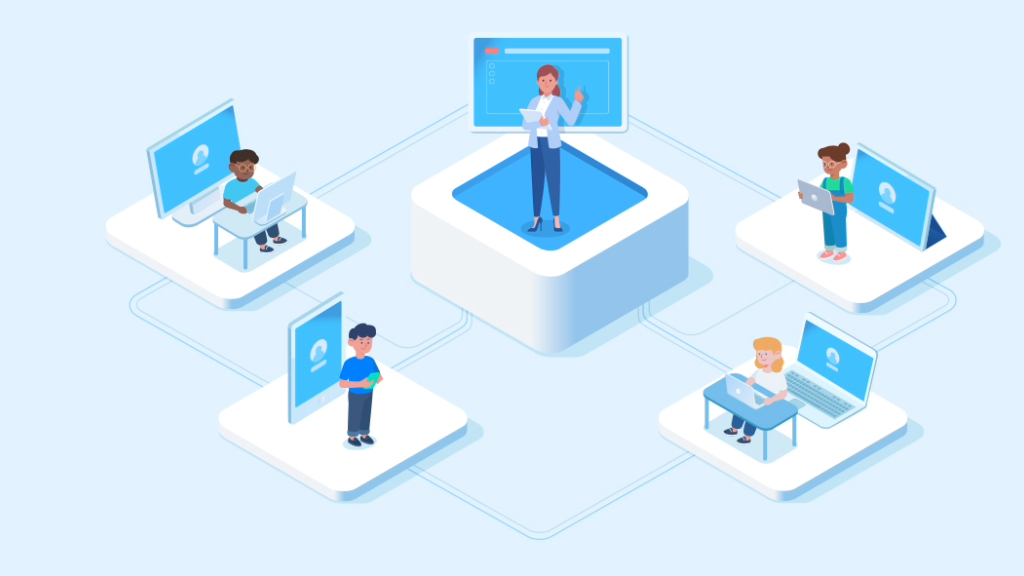The use of data-driven analysis in education and digital learning has been steadily increasing in recent years, due to the potential to increase student achievement and provide more tailored learning experiences. Data-driven analysis allows educators to generate insights into student performance, identify trends, and monitor outcomes to better inform instructional decisions. This helps to ensure students are receiving a high-quality education and that instructional goals are being met. Additionally, by leveraging data-driven analysis, educators can create personalized learning plans that provide students with more engaging and relevant learning experiences.
Data-driven analysis can provide a much-needed transformation in the way that students learn and the strategies used to increase student achievement. By delving deeper into the data, educators can gain valuable insights into student performance that can inform instructional decisions. By incorporating data-driven analysis, educators have the opportunity to foster deeper learning experiences for students and create customized learning plans that enable students to reach their full potential. This article will discuss the many benefits of using data-driven analysis in education and digital learning.
1. Understanding Data-driven Analysis
Data-driven analysis is an approach to decision-making that involves using data gathered from quantitative and qualitative sources to make informed decisions. Instead of relying solely on intuition or past experience, decision-makers use insights gleaned from data in order to develop more successful strategies and outcomes. This kind of data-driven approach is becoming increasingly important in the world of education and digital learning.
Data-driven analysis allows educators to better understand their students and their learning environment across a range of areas. It can help identify any gaps in the curriculum or teaching strategies that need to be addressed or optimized, as well as which digital learning tools are most effective in achieving educational goals. It can also provide insights into student motivation, engagement, and achievement levels, which can help assess and adjust the school’s approach to teaching.
Data-driven analysis provides a powerful tool for educators to make data-driven decisions in order to foster meaningful learning outcomes that are tailored to their students’ individual needs. By analyzing this data and using it to inform their decision-making process, educators can equip their students with the knowledge, skills and resources they need to succeed in the digital learning environment.
2. Increased Insight from Data Analysis

Data-driven analysis in education can provide a greater insight into educational outcomes and the effects on student performance. With data, educators can develop and refine strategies to improve teaching and learning, as well as identify and address existing learning gaps. Through data-driven analysis, teachers can pinpoint parameters that need improvement, such as student attendance, teacher-student interactions or course content. In addition, data can inform decisions such as selecting new curriculum materials, allocating resources, or selecting interventions.
When data-driven analysis is used in digital learning, it can increase the effectiveness of digital resources. For example, algorithms can be used to analyze student performance on assignments and identify specific learning activities or strategies that increase student proficiency. By monitoring student interactions, teachers can better understand how students’ learn digital course material, as well as detect any areas that may need more attention or support. In addition, teachers can use data to personalize learning and develop interaction techniques that engage individual learners.
Data-driven analysis also helps to measure and track progress, particularly when it is applied to long-term goals and objectives. By monitoring student performance, teachers can identify areas that need improvement, as well as recognize successes and recognize areas that are working. By providing insight into the effects of various strategies, data-driven analysis can better inform education decisions and strategies to improve learning outcomes.
3. Improved Efficiency in Education
Data-driven analysis in education and digital learning is a powerful tool to improve efficiency in the teaching process. By leveraging data analytics, educators and school administrators can gain a better understanding of how students learn, the teaching methods that are best for their learning styles, and any issues with the current education program. This allows them to identify areas for improvement and adjust their teaching methods accordingly.
Data-driven analysis can also help educators pinpoint the most suitable learning materials for their students. With access to comprehensive data, educators can create personalised learning plans for each student based on their individual preferences and academic performance, ensuring that the best resources are delivered to them. Additionally, real-time access to data means that educators can better design and update their lesson plans to suit the changing needs of students.
Finally, data-driven analysis can be used to reduce the amount of unnecessary content in educational materials. By closely examining student performance data, educators can quickly identify content that is not effective and pivot to more useful material. This can significantly improve learning outcomes and reduce the amount of time spent on irrelevant topics.
In summary, data-driven analysis offers numerous benefits in education and digital learning. It can increase the efficiency of education by allowing educators to better understand their students’ needs, create personalised learning plans, and remove unnecessary content from educational materials.
4. Technology Applications for Data-driven Analysis

Data-driven analysis combines technology, analytics, and data to provide insights and effective decision-making. In the education sector, data-driven analysis has immense potential when it comes to collecting and managing learning data. Technology applications for data-driven analysis offer more accuracy, better scalability, and faster organizational performance.
One type of application for data-driven analysis is an enterprise resource planning (ERP) system. An ERP system integrates and manages data from multiple sources, such as student transcripts and course information, to provide insights on how to improve the academic performance of students. For example, an ERP system can aggregate and analyze data on student performance, course performance, and attendance, to generate reports that can guide teachers and learners in improving their skills and learning methods.
Another application tool for data-driven analysis is a learning management system (LMS). An LMS can track a student’s learning journey over time and collect data on their performance and progress. This data is then analyzed to assess a student’s strengths and weaknesses, and provide personalized feedback. Additionally, an LMS stores and tracks data on student interactions with the platform, helping to identify areas where students are not engaging with the curriculum or may need additional support.
Data-driven analysis can also be used in digital learning with the help of artificial intelligence (AI). AI-driven platforms can assist in developing personalized learning plans for students, as well as provide automated feedback on performance. This can help teachers design and deliver efficient and effective lessons for their students and provides an objective analysis of their progress.
The combination of various technology tools and data-driven analysis can provide teachers, administrators, and students with powerful insights on how to improve the quality of education and its efficiency. Ultimately, by taking advantage of the technology applications for data-driven analysis, education providers will be able to increase their effectiveness and make better use of the data collected.
5. Impact on Student Learning Outcomes
Data-driven analysis is having a profound impact on the way students learn in the classroom and online. The use of data-driven analysis to measure performance, study student behavior, and monitor progress has had a positive impact on student learning outcomes. By using data to inform instruction and provide personalized learning experiences, educators are able to maximize student success.
First, data-driven analysis allows teachers to quickly assess student understanding in key subject areas. This enables teachers to customize instruction for each student by identifying gaps in student knowledge and learning problems. By taking data-driven analysis into account, teachers can quickly address student weaknesses so that performance is not hindered.
Second, data-driven analysis can be used to monitor student progress over time. By observing trends in performance, teachers can identify when a student is struggling and then implement interventions to help them improve. Additionally, tracking data can help teachers identify what learning strategy works best for each student individually, so they can tailor their instruction accordingly.
Third, data-driven analysis allows teachers to assess the impact of new approaches to teaching and learning. By monitoring student response to new teaching strategies, teachers can identify which strategies are most effective and build those into their instruction accordingly. This will enable students to get the most out of their learning experience.
Finally, data-driven analysis can help to improve school and course-level assessment. By understanding the needs of students, teachers can create assessments that evaluate specific learning goals and hold students to a higher level of understanding.

In this regard, Allvia’s Math Alive assessment system records students’ learning process and suggests the next topic of the lesson based on their diagnostic test.
An LMS, or Learning Management System, like our Math Alive program can monitor and manage students’ learning progress by tracking their activity and progress within the system. This includes monitoring their engagement with course materials, such as how long they spend on a particular lesson or quiz, as well as their scores on quizzes and exams. It can also provide detailed reports and analytics on each student’s progress, which can be used by teachers and administrators to identify areas where students may need extra support or intervention. Additionally, it can provide personalized learning experiences, such as providing different materials or resources to students based on their progress and performance. Math Alive structures this environment from the outset by starting off the diagnostic testing of the student and ongoing evaluation after each module.
Data-driven analysis is an essential tool for educators to maximize learning outcomes for their students. By using data to inform instruction, individualize learning experiences, monitor progress, and create assessments, educators can ensure that their students are set up for success.
Data-driven analysis in education and digital learning offers significant potential for improving and optimizing the teaching and learning process on a deeper, contextualized level. By leveraging today’s ever-evolving technologies, educators and learners can gain greater insights into data-driven teaching and learning and obtain invaluable intelligence on student learning and performance. Ultimately, data-driven analysis in education and digital learning can revolutionize the way educators and learners engage with one another and the process of learning and teaching, allowing us to better understand how to maximize the potential of digital learning. With further advancements in technology and data-driven analysis, teaching and learning can continue to evolve and provide a more personalized learning experience for students and educators alike.







